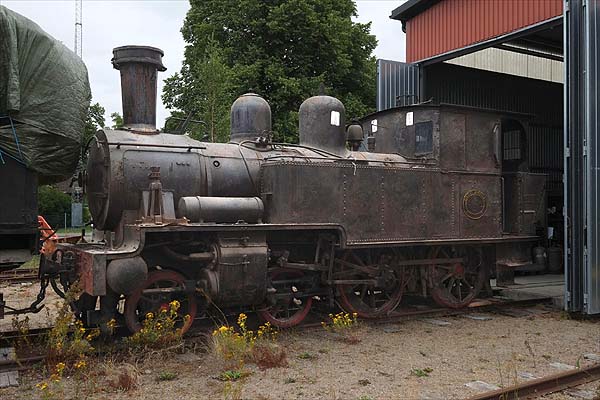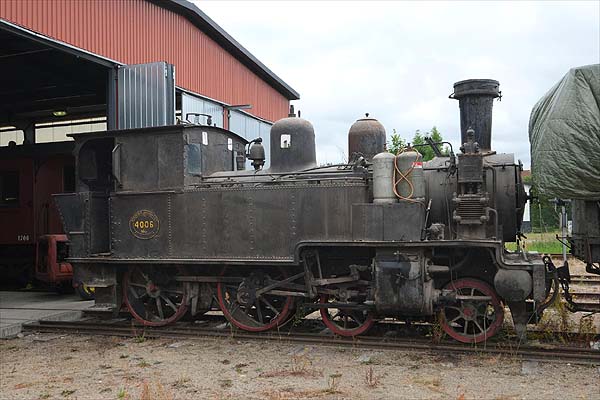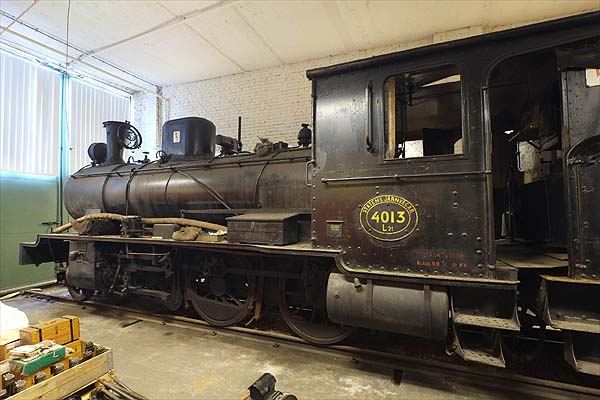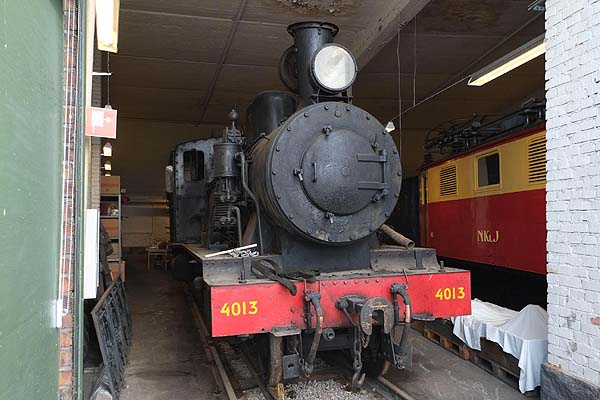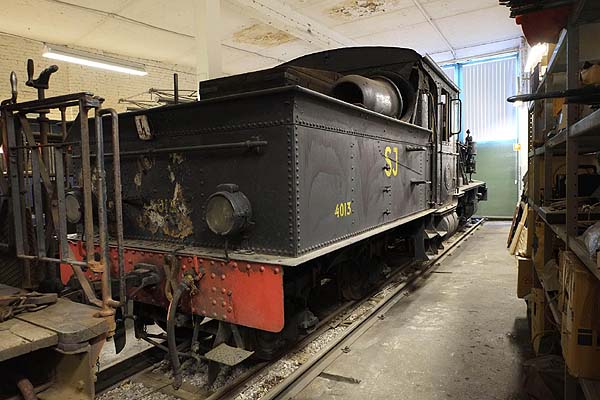|
Sweden's Cape Gauge Legacy, 2017 |
|
|
James Waite writes These photos show the only two surviving locomotives from Sweden's 3ft 6in gauge railway system. Sweden had many narrow gauge railways. The early ones were mostly built by British engineers and used a variety of gauges mostly based on British Imperial measurements. From the early 1870s most railways adopted the 891mm gauge (3 Swedish feet). Some of these were of great length and in the centre of the country two large networks grew up. It would once have been possible to travel by narrow gauge train all the way from Gothenburg on the west coast to Vastervik on the east coast by 891mm gauge train with only one interruption - a ferry ride across Lake Vattern, the long, finger-shaped lake which bisects the southern part of Sweden. Altogether there were more than 3,000km of 891mm gauge routes. The only exception to this was the province of Blekinge in the south eastern corner of the country. Here construction of a 3ft 6ins gauge (British measurements) network began in the early 1870's. Like most of Sweden's narrow gauge railways it was nationalised in the 1940's and 1950's and for a while it was well looked after by SJ. More steam and, later, diesel locomotives appeared. However they decided to abandon it in the 1970's. The major routes were converted to standard gauge and the rest was closed, none surviving into preservation. Out of their many steam locomotives only two remain and neither is on public display. The first two of these photos show 4-4-0T no. 4006 (Nohab 625/1901) which lives in a modern store building at Kristianstad railway museum having been rescued in the 1970's from SJ's scrapyard at Vislanda. I've been trying to get permission to visit it for several years and last month they finally allowed me to go. I made a day trip, flew to Copenhagen, hired a car and drove to Kristianstad via the new(ish) Oresund bridge - and paid a phenomenally expensive toll, just under £50 each way! Much to my surprise and delight when I got there the museum people had moved a farm tractor to the site and were preparing to pull the locomotive out from its shed for me to take its picture. It would have been quite impossible to photograph it adequately inside the shed as it's hemmed in by other stock. It's a pity that it wasn't a sunnier day though in one respect this was just as well. They couldn't get it completely out of the shed as there's a level crossing close to it and the rails have been tarred over - and the bunker would have been in shade as the building faces north. I thought it was a very pretty locomotive. Apparently it was the first time it had been moved for several years and, judging by the amount of complaining noises it made, it didn't much enjoy its short trip! The second of these photos was in the half-sun and as you can see the bunker was already a bit shadier. The 2-6-0 tender engine, no. 4013 (Nohab 836/1907), lives in an old standard gauge roundhouse on the Gavle museum's site and forms a part of their reserve collection. I was shown round it by their assistant curator while visiting last year. I don't think either engine can have been repainted since being withdrawn from service. SJ had quite a logical numbering system for its steam locomotives . 1-2999 were allocated to standard gauge engines, 3000-3999 to 891mm gauge ones and 4000 upwards to the 3ft 6ins gauge. Many of the standard gauge locomotives carried plates with cast numerals, many being made of brass, but SJ economised with the narrow gauge ones as you can see, and most of them had iron plates with the SJ lettering in cast characters with the numerals and class designation just painted on in the middle. Gavle museum has an enormous collection of locomotives but only a small number are on show. In addition to this roundhouse there's another much bigger storage building on the other side of the town and recently they opened this up temporarily and ran a service with a vintage railcar to take visitors there. It's a treasure trove of old locomotives and coaches, the start attraction being a British-built 2-2-2 which is still in working order and ran at a celebratory weekend a couple of years ago. It's a shame more of the collection isn't generally on view. (See a report of the event on this site.) As for rolling stock, tucked in behind the 4-4-0T at Kristiansand is a 3ft 6ins gauge coach, in very poor condition, which apparently has royal connections. Iíve a feeling there was another coach behind the 2-6-0 at Gavle though couldnít say so for sure. On the way back I called at Frank Stenvallís bookshop in Malmo. He has an amazing stock of new and used books from publishers all over the world. Its probably worth going there just to visit it!
|
|
Rob Dickinson
Email: webmaster@internationalsteam.co.uk
